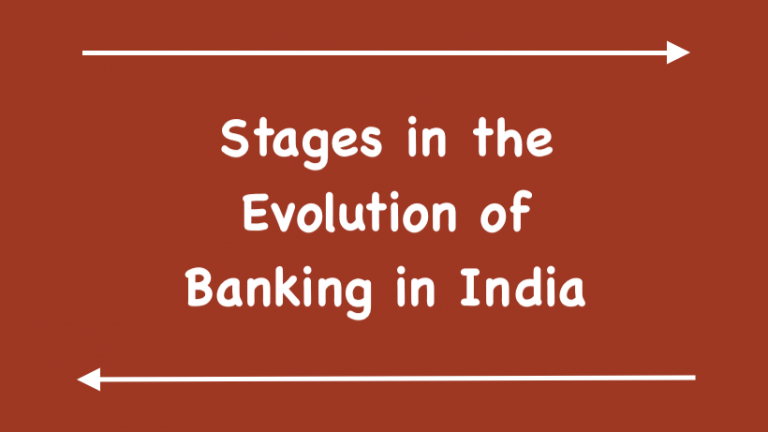Stages in the Evolution of Banking in India: Modern banking as evolved in England was introduced by the British during their rule in India. Naturally, today’s Indian banking is similar to British banking. However, it does not mean that banking was unknown to India. The essence of banking is lending for productive purposes. In fact, India was a major partner in international trading and was a big producer of steel, cloth, spices and luxurious articles.
There are references to rate of interest, security of the loans in the Manusmrity. Kautilya in the ‘Artha Shastra’ mentions regulation of interest rates, deposits and even discounting of bills. They were called ‘Hundies’. The big merchants, traders and moneylenders called ‘Sresthis’ or “Nagarseths” occupied important positions in the Mughal and Maratha courts. They had efficient courier system, extensive branches all over India and they gave loans to the kings also.
Stages in the Evolution of Banking in India
Some important stages in the evolution of modern banking in India are as follows :
1) Agency Houses : When the English traders came to India, they had problem of raising working capital due to the language barrier. Therefore, they established Agency Houses which combined trading with banking. One agency house established the first bank in India called the Bank of Hindustan in 1770. Later on, many banks were established. But they disappeared as fast as they were born. Anybody could then start a bank. The field was free for all.
2) Presidency Banks : The East India Co., the ruler of lndia, took initiative in establishing Presidency Banks by contributing 20% of their share capital to meet its own demand for funds. Accordingly, Bank of Bengal, Bank of Bombay and Bank of Madras were established in 1806, 1840 and 1943 respectively.
3) Joint Stock Banks : In 1884, banks were allowed to be established on the principle of limited liability. In due course, this encouraged establishment of banks. By the turn of the century, many banks with the initiative of Indians were established. Punjab National Bank, Allahabad Bank, Bank of Baroda are some of the banks then established. Many foreigners also came in the field of Indian banking.
4) Imperial Bank of India : To meet the competition of foreign banks, the three Presidency Banks were amalgamated and a powerful Imperial Bank of India was established in 1921 with its network of branches all over the country. This bank was later nationalised in 1955 and it is today’s State Bank of India. This is a prestigious bank as the Government is its customer.
5) Establishment of the Reserve Bank of India : Though there was boom in banking, due to absence of any regulation and facility of timely assistance there were recurrent bank failures. This resulted in suspicion about banks in the minds of the people. They stayed away from banks. The need for a separate Central Bank was emphasised by the Hilton Young Commission. Accordingly, the RBI was established in 1935 to perform all the functions of a Central Bank. It was modeled on the pattern of the Bank of England. But it did not have much power of regulation. The period was also critical one due to the great depression and the subsequent Second World War. The RBI could not do much about banking.
6) Nationalisation of the RBI and the Banking Regulation Act :
These two important steps were taken in 1949. Immediately after independence wide powers of regulation and control were given to the RBI and by making use of those powers the RBI was successful in making Indian banking trustworthy. Soon, bank failures became a thing of the past and India’s banks progressed under the guidance of the RBI. Many malpractices, deficiencies and drawbacks were sought to be removed by the RBI.
7) Nationalisation of Banks in 1969 and 1980
Another significant step was taken in 1969 by nationalising 14 big Indian banks. Then six more banks were nationalised in 1980. The nationalisation of banks brought about a sea-change in the policies, attitudes, procedures, functions and coverage of banks. Indian banks are now being prepared to become international players. These are the stages through which Indian banking developed.
Recommended Articles
